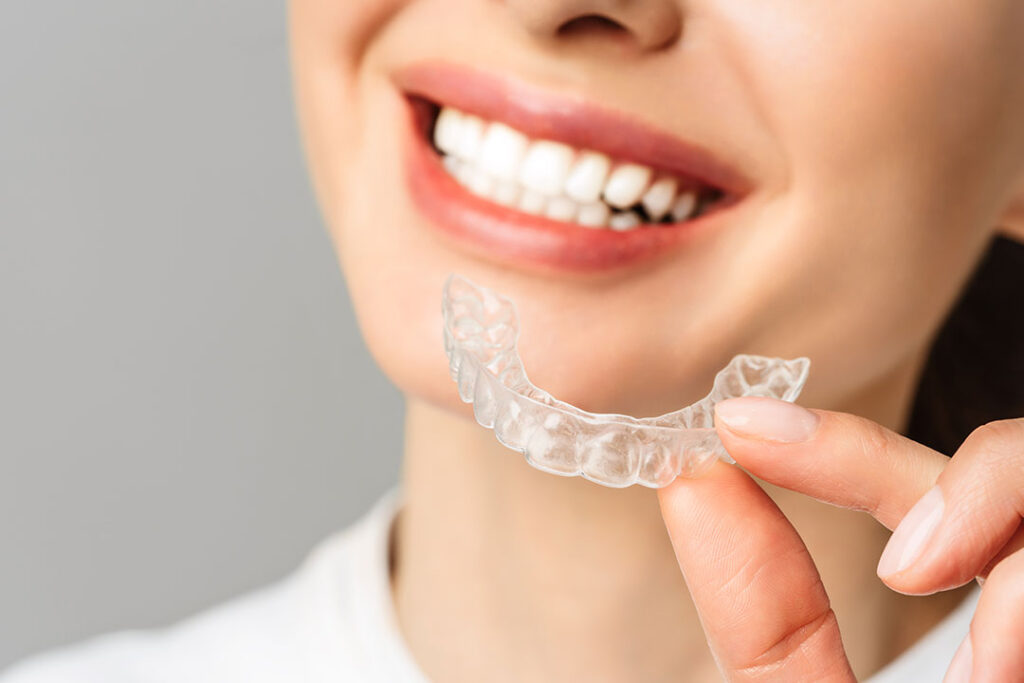Invisalign offers a discreet way to straighten your teeth—but how much does it really cost when insurance is involved? The answer isn’t one-size-fits-all. From coverage limitations to out-of-pocket surprises, understanding what you’ll actually pay can be tricky. Before you commit, find out what to expect and how to get the most from your dental benefits.
TL;DR:
In New York, Invisalign costs $3,500–$8,500 without insurance, with prices influenced by case complexity, provider expertise, and location. With insurance, coverage may reduce costs by $500–$3,000, typically covering 25–50% or offering a fixed amount, but benefits vary by plan. To confirm coverage, review your policy, contact your insurer, and consult your orthodontist. Additional savings can come from FSAs/HSAs, in-office financing, promotional discounts, or opting for Invisalign Express for minor cases.
Clear, comfortable, effective—Contact us for Invisalign in Queens today! 🦷

How Much Does Invisalign Cost Without Insurance in NY?
In New York, the cost of Invisalign treatment without insurance generally ranges from $3,500 to $8,500. This wide range is influenced by several key factors, especially in high-cost areas like New York City, where dental services tend to be more expensive than in less urban regions.
Factors Influencing Cost:
- Complexity of the Case: If your alignment issues are more severe, you may need more aligners and a longer treatment timeline, which can significantly raise the overall cost.
- Provider’s Experience: Orthodontists with advanced expertise or higher Invisalign provider tiers may charge more for their services, reflecting their experience and success rates.
- Geographical Location: Being treated in a major metropolitan area like NYC often comes with higher fees due to increased overhead and demand.
How Much Does Invisalign Cost with Insurance in NY?
If your dental insurance includes orthodontic coverage, it can significantly lower the out-of-pocket cost of Invisalign treatment in New York. Depending on your plan, insurance may cover 25% to 50% of the total cost—resulting in savings between $500 and $3,000.
Coverage Details:
- Fixed Dollar Amount: Some insurance plans offer a flat reimbursement for orthodontic treatments, regardless of the total treatment cost.
- Percentage-Based Coverage: Other plans cover a set percentage of the treatment fee, often with a cap on the total benefit amount.
It’s important to note that insurance coverage varies. Factors such as coverage limits, waiting periods, and eligibility requirements can all impact how much your plan will contribute. To avoid surprises, review your policy or speak with your insurance provider to clarify exactly what’s included.
How to Know If Your Dental Insurance Covers Invisalign
Finding out whether your dental insurance covers Invisalign involves a few simple but important steps that can make a big difference in your treatment planning. Comprehending your coverage upfront helps you avoid unexpected expenses and ensures you’re making informed financial decisions before starting. Since Invisalign is often considered both a functional and cosmetic treatment, coverage can vary—so it’s worth taking the time to clarify your benefits.
Review Your Policy
Start by reviewing your dental insurance policy documents. Check the section on orthodontic benefits, as Invisalign coverage—if included—is typically listed there. Look for details on coverage limits, eligibility, and whether Invisalign is considered a covered treatment.
Contact Your Insurance Provider
Call your insurance company to ask specifically about Invisalign coverage. Be sure to confirm any waiting periods, percentage-based coverage, or lifetime maximums. Some insurers may classify Invisalign as a cosmetic procedure, which can impact whether it’s covered under your plan.
Consult with Your Orthodontist
Your orthodontist can often help verify insurance benefits and may assist with the necessary paperwork. If you’re in New York, Madison Dental Art accepts a wide range of dental insurance plans and can work with you to confirm what your policy includes.
Taking these steps will give you a clearer picture of your potential Invisalign coverage and help you move forward with confidence.
Other Ways to Reduce Invisalign Costs
Beyond insurance coverage, there are several practical strategies that can help make Invisalign treatment more affordable. Exploring these options can ease the financial burden and make achieving a straighter smile more accessible.
Flexible Spending Accounts (FSA) or Health Savings Accounts (HSA): If you have an FSA or HSA, you can use pre-tax dollars to cover eligible medical expenses, including Invisalign. This can lower your overall out-of-pocket cost by reducing your taxable income.
In-Office Financing Plans: Many orthodontic practices offer financing plans that allow you to spread the cost of treatment over several months. These plans often come with low or no interest, making it easier to manage payments over time.
Promotional Discounts: Some providers offer special promotions or discounts, especially for patients who pay upfront or start treatment during a promotional period. It’s worth asking your provider if any current offers are available.
Invisalign Express: For those with minor alignment concerns, Invisalign Express may be a more cost-effective alternative. This shorter treatment option uses fewer aligners, which can significantly reduce the total price.
Sources.
Coughlan, A., Hennessy, J., Najjar, A., Auyang, E., Batanghari, W., & Cartwright, C. (2017). Invisalign: Orthodontics Unwired. Kellogg School of Management Cases, 1-18.
Key Takeaways:
Cost Without Insurance in NY: Invisalign typically ranges from $3,500–$8,500, with higher costs in NYC due to overhead, provider expertise, and case complexity.
Cost With Insurance: Dental insurance with orthodontic coverage may pay 25%–50% or a fixed dollar amount, reducing costs by $500–$3,000, but coverage varies by plan.
Coverage Details: Benefits can be percentage-based or fixed, often with caps, waiting periods, and eligibility rules.
Confirming Coverage:
- Review your policy for orthodontic benefits.
- Call your insurer to confirm Invisalign eligibility, coverage limits, and waiting periods.
- Consult your orthodontist for insurance verification and paperwork assistance.
Additional Savings Options:
- Use FSA or HSA funds for pre-tax savings.
- Consider in-office financing with low/no interest.
- Look for promotional discounts.
- For minor cases, Invisalign Express offers a shorter, cheaper treatment.